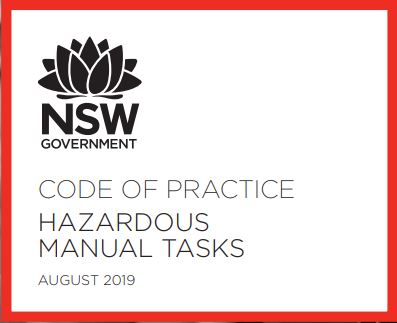For those of you that follow our monthly task program, hazardous manual tasks are our focus this month.
The following article provides a summary of the Code of Practice for Hazardous Manual Tasks in Australia.
The Code of Practice for Hazardous Manual Tasks in Australia is a comprehensive guideline designed to ensure the health and safety of workers by providing a framework for managing risks associated with manual tasks in the workplace.
The Code was developed by Safe Work Australia (SWA). SWMA is a statutory body responsible for developing a national policy on work health and safety (WHS) and workers’ compensation.
The Code of Practice covers the following key areas:
Introduction
The Code outlines the guidelines’ purpose, scope and application, emphasizing the importance of understanding and managing risks associated with hazardous manual tasks.
It acknowledges that hazardous manual tasks significantly cause musculoskeletal disorders (MSDs) in the workplace.
Identifying hazardous manual tasks:
Employers are encouraged to identify hazardous manual tasks by considering factors like repetitive movements, sustained postures, high forces, vibration, and handling unstable or unbalanced loads.
Consultation with workers and their representatives is crucial for identifying such tasks.
Assessing the risks:
The Code highlights the importance of assessing the risks associated with hazardous manual tasks by considering the work environment, the nature of the task, and the workers involved.
Employers should use a risk management approach that considers the likelihood and consequence of injury and any existing control measures.
Controlling the risks:
Employers must implement control measures to eliminate or minimize the risks associated with hazardous manual tasks.
The Code follows the hierarchy of control, which includes elimination, substitution, isolation, engineering controls, administrative controls, and personal protective equipment (PPE).
Reviewing control measures:
Employers are encouraged to review the effectiveness of implemented control measures regularly, considering changes in work processes, equipment, or the work environment.
Consultation with workers is essential during this process.
Training and instruction:
The Code emphasizes the importance of providing training and instruction for workers on performing hazardous manual tasks safely, using the appropriate control measures, and recognizing early signs and symptoms of MSDs.
Record keeping:
Employers must maintain records related to risk assessments, implementing control measures, and worker training to ensure compliance with the Code and demonstrate their commitment to work health and safety.
Conclusion
The Code of Practice for Hazardous Manual Tasks in Australia aims to protect workers from the risks associated with manual tasks by providing clear guidelines for identifying, assessing, and controlling those risks.
By adhering to the Code, employers can create a safer work environment, reduce the occurrence of MSDs, and improve overall work health and safety outcomes.
Click here for a copy of the Code of Practice in NSW.

